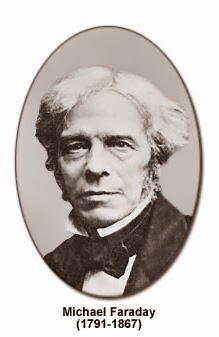For the Upcoming Test & Team evaluation:
- Come prepared (be there early, with pencil and calculator. You will not be allowed to use the computers.)
- Skim through entire test before starting
- Do the easy problems first
- keep track of the time
- Go for partial credit - don't leave anything blank - if you know it's wrong, explain that you know it is wrong, and write down your thinking process.
- Show all of your work.
- Don't erase your work - just put a single line through it (you might get more partial credit)
- Check over your answers, and re-check them. Don't leave early.
Warning: To prevent cheating, each test will be slightly different, so don't copy what your neighbor is doing!
Finish this BEFORE coming to the test. ~~~~~~~~~~~~~~~~~~~~~~~~~~~~~~~~~~~
Skim through all the notes!
4 key components an Engineer must balance:
- need for change,
- limited resources,
- determining what’s best,
- dealing with uncertainty.
- Heuristics – list of suggestions, hints, or rules of thumb to use in seeking a solution to a problem.
- What is the difference between scientists and engineers? Engineering is applied.
~~~~~~~~~~~~~~~~~~~~~~~~~~~~~~~~~~~~~
History of Engineering - link
We have progressed more in the last 200 years, than in the previous 5,000+ years....
Why were there so few innovations in the early years?
Information age = Technology age
Can you list some of the innovations that changed the world?
~~~~~~~~~~~~~~~~~~~~~~~~~~~~~~~~~~~~~~~

The Design Process presented in your text has 10 phases:
PGR.BAT.DCCR.
1. Identify the Problem/product innovation
2. Define the working criteria/Goals
3. Research and gather data
4. Brainstorm/generate creative ideas
5. Analyze potential solutions
6. Develop and Test models
6. Develop and Test models
7. Make the Decision
8. Communicate and specify
9. Implement and Commercialize
10. Perform post-implementation Review and assessment
Teamwork notes:
What is synergy?
1+1=3. The whole is greater than the sum of it's parts because of of the products of interactions. (1 bird + 1 bird = 3 babies + singing + patterned flying formations + many other behaviors that a single bird could not exhibit on it's own)
What are emergent properties?
Properties created through interactions.
Examples: Color, phases of matter (gas, liquid, solid), interaction potentials, etc. etc. You cannot define the phase of matter, or see the color, or know the friction of a single atom. All of the properties that we measure are not those of the individual, but of how that individual interacts with it's surroundings. Teamwork is the same - "Who you are is who you are with others", if you are kind, you are kind to others, if you are quiet, you are quiet around others etc.
Successful companies are large teams that thrive on emergence and synergy between those working there.
What are Tuckman's 5 stages of team growth?
1. Forming
2. Storming (is this stage good or bad?)
3. Norming
4. Performing
5. Adjourning
~~~~~~~~~~~~~~~~~~~~~~~~~~~~~~~~~~~~~~~~
Components of an Engineering Report
- #'d Headings and Subheadings
- Figures and tables with captions and headings
- #'d equations
- Reference section
Meyers, and Jung Typologies, Kolb learning Cycle
What Meyer's personality type are you?What learning style are you?
What strengths and weaknesses go along with your personality type? What are the best ways for you to study? With a book? with youtubes? With a study group?
Perry's Scheme of Intellectual and Ethical Development
What Perry levels do typical college students progress through? Be prepared to explain each level:
1.) Dualism - no ambiguity, right/wrong answers for everything, trust in authority figures.
1.) Dualism - no ambiguity, right/wrong answers for everything, trust in authority figures.
2.) Multiplicity - starts recognizing that ambiguity exists in some situations, but does not know how to find a solution for ambiguous problems.
3.) Contextual Relativism - all solutions are relative and subjective - valid only in a certain context.
4.) Contextually Appropriate Decisions -ability to make decisions and commitments based on personal values and analysis, and takes personal responsibility for the commitment
~~~~~~~~~~~~~~~~~~~~~~~~~~~~~~~~~~~~~
Statics
Skim through notes
Understand what we did in lab -

Calculate Std Deviation if given the equation:

Practice problems -
1. What is the static friction coefficient for a block weighing 20 kg that starts slipping at 30 deg?
Ans: 0.577
2. The static friction coefficient between a block weighing 30kg and the ground is 0.5. What force is needed to pull the wooden block from rest across a horizontal surface? (g = 9.81m/s^2)
Ans: 147.15N
~~~~~~~~~~~~~~~~~~~~~~~~~~~~~~~~~~~
Circuits
Skim through the notes.
Solve the practice problems -

series:

Practice problem:
In the above series circuit,
V = 12V
R1 = 1,000 Ohms,
R2 = 2,000 Ohms, and
R3 = 3,000 Ohms
Calculate the current, and voltage drop across each resistor.
Ans: i = 0.002 amps, V1 = 2V, V2 = 4V, V3 = 6V
In the above series circuit,
V = 9V
R1 = 1,500 Ohms,
R2 = 1,000 Ohms, and
R3 = 500 Ohms
Calculate the current, and voltage drop across each resistor.
Ans: i = 0.003 amps, V1=4.5V, V2=3V, V3=1.5V
Example Parallel Circuits Problem:

Solve for all of the current and voltage drops in the above parallel circuit if:
V = 10V
R1 = 500 Ohms
R2 = 1,000 Ohms
R3 = 750 Ohms
Ans:
V1 = V2 = V3 = 10V
i1 = 0.02 amps, i2 = 0.01 amps, i3 = 0.01333 amps
~~~~~~~~~~~~~~~~~~~~~~~~~~~~~~~~~~~~~~~~~~~~~~~~~~~~~~~~~~~~~~~~~~~~~
Let me know if there is anything you need help with!


























